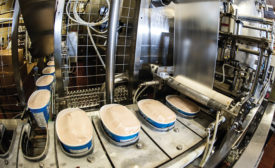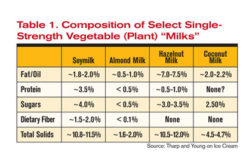Home » Keywords: » frozen dessert processing
Items Tagged with 'frozen dessert processing'
ARTICLES
The creation of ice cream-like functionalities and sensory appeal involves new challenges on multiple fronts
Read More
Using ‘rare’ sugars in ice cream, frozen dessert formulas affects everything
Using ‘rare’ sugars in ice cream and frozen dessert formulas affects everything from nutrition labeling to processing considerations, like the freezing point depression.
September 7, 2016
Using ‘rare sugars’ in frozen dairy and nondairy desserts
In this first of two parts, the authors discuss ‘rare sugars’ and their application in frozen dairy and nondairy desserts.
May 9, 2016
Creating frozen desserts with nondairy milks
Formulating with plant-based milks is not as straight forward as simply substituting dairy milk with an alternative. Here’s what you need to consider.
May 10, 2014
Get our new eMagazine delivered to your inbox every month.
Stay in the know on the latest dairy industry trends.
SUBSCRIBE TODAYCopyright ©2024. All Rights Reserved BNP Media.
Design, CMS, Hosting & Web Development :: ePublishing



